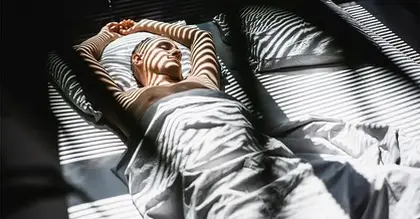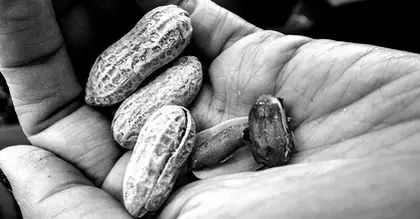
- Of the more than 356,000 cardiac arrests in the United States each year, 90% are fatal.
- While there are some known signs of sudden cardiac arrest, it usually occurs without warning.
- Researchers from the Smidt Heart Institute at Cedars-Sinai Health System have found that half of people experiencing a sudden cardiac arrest also had a telling symptom 24 hours beforehand.
- Scientists also discovered those warning symptoms are different between men and women.
More than 356,000 out-of-hospital cardiac arrests occur in the United States each year. Of that number, about 90% cause a fatality.
Although there are some known signs and symptoms of cardiac arrest — also known as sudden cardiac arrest — most times it occurs without warning.
Now, researchers from the Smidt Heart Institute at Cedars-Sinai Health System have found that half of people experiencing a sudden cardiac arrest also had a telling symptom 24 hours beforehand.
Additionally, researchers discovered those warning symptoms are different between men and women.
This study was recently published in the journal
Cardiac arrest occurs when the heart suddenly stops beating, stopping blood from pumping throughout the body.
The main cause of sudden cardiac arrest is an arrhythmia or abnormal heartbeat. An arrhythmia occurs when the electrical pulses telling the heart to pump blood are disrupted.
Cardiac arrest is different from a heart attack. A heart attack happens when a blockage in an artery stops blood from flowing through the different sections of the heart, but it does not cause the heart to completely stop beating as cardiac arrest does.
However, having a heart attack can
Other cardiovascular diseases, such as coronary artery disease, cardiomyopathy, and
Often, cardiac arrest will occur without any warning signs and will cause a person to faint or become unconscious.
Other signs of cardiac arrest include:
- racing heartbeat
- dizziness
- chest pain
- shortness of breath
- wheezing
- nausea and/or vomiting
Sudden cardiac arrest is a life threatening emergency, and you should call 911 to get emergency care as soon as possible.
Research shows
According to Dr. Sumeet Chugh, a cardiac electrophysiologist and director of the Center for Cardiac Arrest Prevention in the Smidt Heart Institute at Cedars-Sinai Health System and lead author of this study, it is important to have better predictors for sudden cardiac arrest.
“Even today, only 10% of Americans who suffer a sudden cardiac arrest — 360,000 per year — will survive this devastating event,” he told Medical News Today. “Current methods of predicting and preventing sudden cardiac arrest are inadequate. Early contact with the 911 system could improve survival, but most individuals tend to ignore their warning symptoms.”
– Dr. Chugh
This is not the first study to look at new ways of predicting sudden cardiac arrest. Previous studies have used
For this study, Dr. Chugh and his team analyzed data from two ongoing community-based studies —
Upon analysis, researchers found that 50% of people who had a sudden cardiac arrest in the studies that was witnessed by a bystander or an
These telltale symptoms included shortness of breath, chest pain, excessive sweating, and seizure-like activity.
Dr. Chugh said they were unsurprised by this finding:
“A research study that we published in 2016 suggested that this was going to be the case. However, since there can be a wide variety of warning symptoms often overlapping with symptoms connected with other conditions, we needed to perform the current study to understand which symptoms were most important for sudden cardiac arrest.”
For the next steps in this research, Dr. Chugh said they plan to conduct new research studies focused on how the prediction of imminent sudden cardiac arrest could be further improved by adding features, such as the patient’s clinical profile and
The scientists also found differences in the sudden cardiac arrest warning symptoms between men and women.
Researchers found that the most prominent symptom for women 24 hours before cardiac arrest was shortness of breath. For men, chest pain was the preeminent telltale symptom.
“There is increasing and urgent recognition of how important it is to always perform clinical research that can evaluate sex differences between conditions,” Dr. Chugh said.
“For sudden cardiac arrest, there are already well-established findings that suggest different mechanisms and underpinnings of this condition between the sexes. For example, men are far
“In advising patients, especially those who are known to have significant heart conditions, healthcare providers can make them aware that women with unexpected shortness of breath have a 3-fold higher risk of an imminent sudden cardiac arrest; and men with unexpected chest pain have a 2-fold increased risk,” he added. “In these situations, it would be prudent to seek urgent care.”
Medical News Today also spoke about this study with Dr. Jennifer Wong, cardiologist and medical director of Non-Invasive Cardiology at MemorialCare Heart and Vascular Institute at Orange Coast Medical Center in Fountain Valley, CA.
She said it is important to have known predictors for sudden cardiac arrest so that it would allow doctors to treat and hopefully prevent cardiac arrest from occurring.
“Certain types of
As far as a difference in the 24-hour warning symptoms of sudden cardiac arrest, Dr. Wong said there are also gender differences in other cardiovascular diseases, such as a heart attack that could potentially cause cardiac arrest.
“Women tend to have more atypical presentations of heart attacks,” she continued. “Chest pain is still the most common presentation on both men and women, but women tend to have more of the atypical symptoms such as pain in a different location, shortness of breath, or fatigue.”
“We should keep looking for patterns and predictors of cardiovascular disease to better risk stratify and prevent the disease before they occur,” Dr. Wong added.





